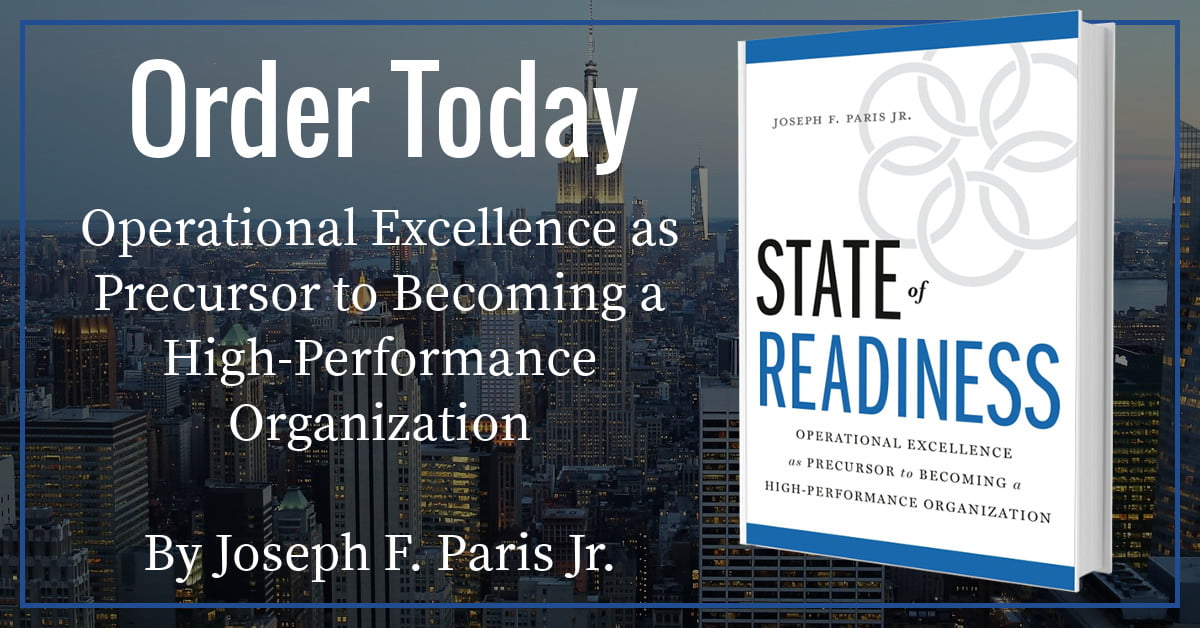Wicked Problems
There are all manner of problems (being an optimist, I rather use the term “challenge”) that we face each and every day.
Most of these challenges are simple enough: what’s for dinner this eve; is there traffic on the highway that is going to impede my progress; do I have any clean underwear, and so on. Some challenges are more complex; how are we going to meet our production schedule; my primary vendor has failed and I need to bring a replacement on-line; which automobile or house should I purchase and what are the financing options, etc…
Then there are “wicked problems”.
A “wicked problem” is not a problem that is inherently evil – but, rather, a problem whose complexity is such that any approach to resolve is incredibly difficult (or quite possibly impossible) to formulate and deploy. The nature of wicked problems is that they consist of a large number of requirements and variables which are contradictory, fluid, and even unknown. Because of the complex web of interdependencies, a solution to one part of a wicked problem can result in the creation of other problems or cause problems which were previously unknown to be revealed.
Wicked problems are constructs of human activity. For instance, laws of nature (physics, math, chemistry) are made by nature and are unimpeachable. If there is a discrepancy that is discovered, it is our understanding of nature that is in error and not nature. However, the laws of mankind are made by mankind and can be bent (to breaking) or reformed by mankind.
Therefore, wicked problems are going to be found in the realms of social, economic, political, and similar activities of mankind such as; globalization, the fight against poverty, global warming, the war on drugs, social justice, religious reconciliations, race relations, and the like. Many people would might also consider the spread of disease as a wicked problem, but the wicked problem does not lay with the disease, but with how mankind behaves in the face of the disease.

And then there are wicked problems whose existence is the purview of business such; as strategy development and deployment, product design and manufacturing, managing and disseminating the wisdom that is contained within the organization, and so forth. All the more so as the business expands and it is faced with competing (sometimes contradictory) priorities. There is an excellent article “Strategy as a wicked problem” (John Camillus, Harvard Business Review).
The phrase “wicked problem” was first used by Horst Rittel in the 1960’s in describing the complexities involved in designing information systems. Perhaps the slang use of the word “wicked” in the 1960’s explains Rittel’s use in describing an incredibly complex problem which might have no solution (certainly not easy solution). Think of: “That skateboard move was ‘wicked’”, or “It’s ‘wicked’ hot today.”
Rittel and Melvin M. Webber formalized the characteristics of a “wicked problem” in 1973;
- Wicked problems have no “stopping rule”. There is no ultimate solution that solves the problem, but rather a series of decision-points which precipitate actions and lead to other decision-points.
- Each step in a solution to a wicked problem is “un-doable”. The action taken renders the present state that exists as a result of that action as the starting point. Considering the baking of a cake; once baked, you cannot unbake it – and if there was an unexpected outcome, you can only start from where you are.
- There is instantaneous or final test of a solution to a wicked problem. Given the complexity of a “wicked problem”, any the ultimate impact of any action may not be known until some time in the future – and even then, the tie-back to the action might be unclear from subsequent actions which may or may not be related to the original action.
- Wicked problems do not have a finite number of solutions available nor are those solutions able to be described in absolute terms.
- A wicked problem can be viewed upon as a symptom of another problem. For instance, consider the amount of carbon being generated (a result of the wicked problem of globalization) which is a consequence of the fight against world poverty.
- Solutions to wicked problems are not offered in absolute terms (such as true-or-false), but rather as being good or bad. Expanding upon there being an absence of a “stopping rule”, most solutions do not have an absolute answer which is objective, but rather a series of answers which are subjective given the solution’s overall impact on the problem.
- The planner has no right to be wrong and are responsible for the consequences of their actions and the subsequent results. Think of the leader of a nation who goes to war and loses; certainly there is no absolute certainty of victory on the onset of hostilities – and if the leader is wrong, they suffer the consequences of that decision (personally and historically).
- A wicked problem is unique. By its very nature, a wicked problem exists at the highest (macro) level and does not lend itself to duplicity. Certainly, wicked problems might be inter-related, but there would not exist two of the same.
- A wicked problem does not have a definitive formulation. For instance, what might be described as being impoverished in one place might not be considered impoverished in another; think of people struggling to live on Social Security in the United States living quite well in Ecuador.
- A discrepancy in a wicked problem can be explained in several ways – from many perspectives. The perspective will determine the approach to resolving the problem. Consider global warming; it is well known that the earth has experienced several cycles of warming then cooling. The peak of the last ice age was 50,000 years ago and the earth has been warming ever since. The question is, how much of this warming is due to mankind and how much is a natural phenomenon? The approach will depend on an individual’s perspective.
Then there are “Super Wicked Problems”;
As if wicked problems were not bad enough – along comes the notion of “Super-Wicked Problems”, which are problems so complex and whose demand for resolution is very near-term, as to be (for all intents and purposes) unsolvable. In addition to the characteristics of wicked problems, super-wicked problems having the following characteristics
- A short runway. The time for a solution to be found and implemented is very finite.
- Too many cooks spoil the soup. There is no central power and, therefore, no one who can make a decision without a decision being agreed by all (or the preponderance).
- Self-inflicted wounds. The people seeking a solution to the super-wicked problem are also the primary source of its existence and being perpetuated.
- Jumping and asking how high on the way up. Given the short runway, the approaches considered and enacted pay little consideration or heed of their impact on the future.
Certainly, when faced with a super-wicked problem, there may not be degrees of winning but, rather, degrees of losing – with the goal being to contain and minimize your loss.
Strategies to engage wicked problems
Because of the complexity involved in wicked problems, the design to any approach will also have to have a sense of being wicked. Each stakeholder will have their own perspective (of the nature of the problem, what’s important and needs prioritization, and the various approaches considered). And given the nature of perspectives, there is no absolute right or “best” approach. As such, any approach will require considerable innovation and creativity to strike enough of a balance such that a “move forward” decision can be made.
- Competitive Strategies approach wicked problems by pitting perspectives and solutions against one another with the expectation that the best solutions in the proper priority will naturally make themselves known and selected. The risk here is twofold; i) who makes the decision as to which is best (highly subjective and prone to politics) and ii) the nature of competitiveness is its secretive nature – neither side wanting to share its information and findings with another, least they find themselves at a disadvantage in the competition.
- Authoritative Strategies approach wicked problems by creating a small group of responsible decision makers from the stakeholders involved. This reduction in the stakeholders represented reduces the number of perspectives considered and the weight each is given – thus lending itself to the acceleration of the decision-making process. However, the risk is that a perspective with significant impact is not properly considered – or that enough of the stakeholders feel slighted and refuse to endorse the decisions made.
- Collaborative Strategies approach wicked problems as a big-tent, with all (or nearly all) stakeholders and their perspectives given consideration. The expected (hoped for) outcome is a balanced approach which is “best” overall. The risk is time – meetings, studies, and deliberations all take time. In addition to special interests being given the time to gestate and with time being the enemy, the risk is that there is too little done that is too late. There comes a point when it is time to stop thinking and start doing.
Then there is the fundamental that is the nature of wicked problems at their core: Do all wicked problems need a solution that solves the problem – fix the problem through reversal? Or is adapting to the wicked problem itself a solution. For instance; there is a lot of debate and action on the topic of global warming – should equal emphasis be placed on mitigation as well as preparation?
Business strategy development and deployment can also be a wicked problem, especially when the size and scope of an enterprise becomes large and unwieldy. Which markets are pursued? Which products get priority? Do you grow organically or through acquisition? With all of these competing (even conflicting) initiatives, which get the resources? Do you even have the resources? When you execute, how do you keep true to your vision when the marketplace might not be cooperating?
Certainly, there is no button you can push or pill you can take which will magically make everything work out the way you planned, which means it all comes down to how you design the definition and subsequent pursuit of that vision – with the advantage going to the elegant design pursued incrementally and with agility.
About the author
Joseph Paris is an international expert in the field of Operational Excellence, organizational design, strategy development and deployment, and helping companies become high-performance organizations. His vehicles for change include being the Founder of; the XONITEK Group of Companies; the Operational Excellence Society; and the Readiness Institute.
He is a sought-after speaker and lecturer and his book, “State of Readiness” has been endorsed by senior leaders at some of the most respected companies in the world.
Click here to learn more about Joseph Paris or connect with him on LinkedIn.







